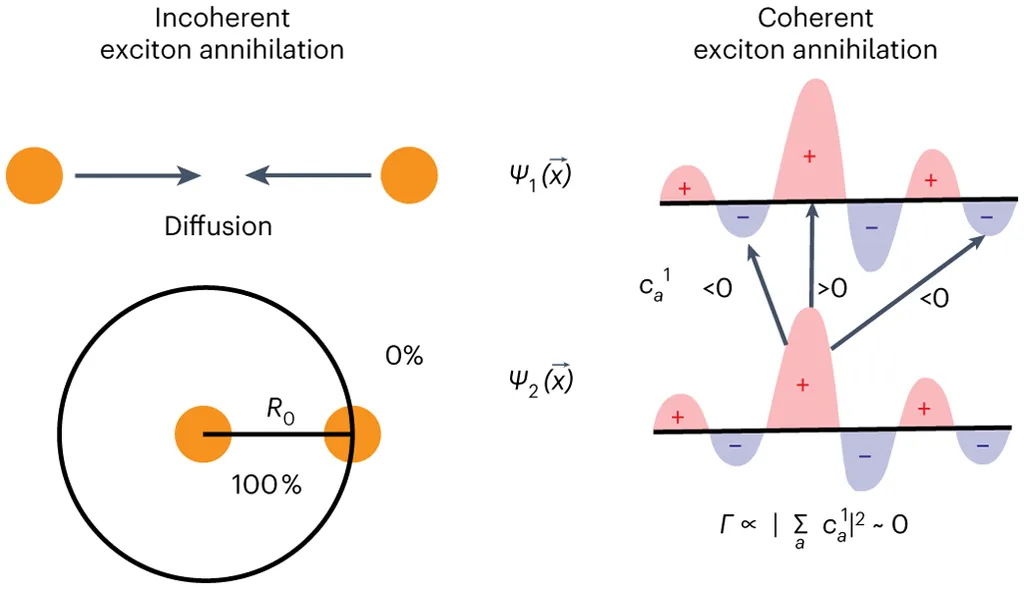In the ever-evolving landscape of organic optoelectronic materials, a groundbreaking review article has emerged, shedding light on the intricate dance of excitons within confined molecular aggregates. Published in the journal *Information & Functional Materials* (translated from Chinese as *信息与功能材料*), this research, led by Xiaozhen Chen from the South China University of Technology, delves into the fundamental physics governing these materials, paving the way for enhanced performance in applications ranging from organic light-emitting diodes (OLEDs) to organic photovoltaics (OPVs) and even photocatalysis.
Excitons, the bound electron-hole pairs that form when light is absorbed by a material, are the lifeblood of optoelectronic devices. Understanding their behavior is crucial for optimizing the efficiency and functionality of these technologies. Chen’s review meticulously traces the historic development of exciton models, highlighting the discovery of various molecular stacking patterns—H-aggregates, J-aggregates, X-aggregates, and M-aggregates—and their impact on exciton dynamics.
One of the most compelling aspects of this research is its exploration of the competitive de-excitation pathways of excitons. “By understanding these pathways—fluorescence, energy transfer, singlet fission, excimer formation, and symmetry-breaking charge separation—we can better manipulate the optoelectronic properties of macroscopic aggregates,” Chen explains. This insight is particularly relevant for the energy sector, where the quest for more efficient solar cells and lighting solutions is ongoing.
The review underscores the importance of the correlation between molecular stacking modes and exciton behaviors. By modulating the arrangement of molecules in aggregate states, researchers can optimize exciton characteristics, thereby enhancing the performance of optoelectronic materials. This could lead to more efficient solar panels, brighter and more energy-efficient displays, and advanced photocatalytic systems.
The implications of this research are far-reaching. As the world grapples with the need for sustainable energy solutions, the insights provided by Chen’s work could be instrumental in developing next-generation optoelectronic devices. By fine-tuning the molecular architecture of these materials, scientists can unlock new levels of efficiency and functionality, ultimately contributing to a more sustainable future.
In the words of Chen, “This review provides new insights and perspectives for optimizing exciton character and behavior through the modulation of molecular arrangement in aggregate states.” As the field continues to evolve, the work published in *Information & Functional Materials* serves as a beacon, guiding researchers toward innovative solutions that could revolutionize the energy sector.

